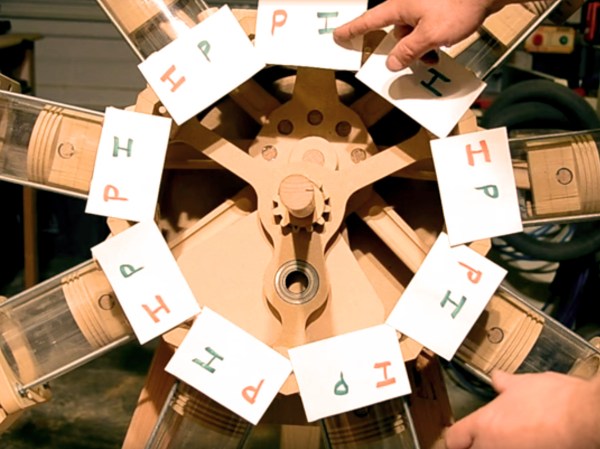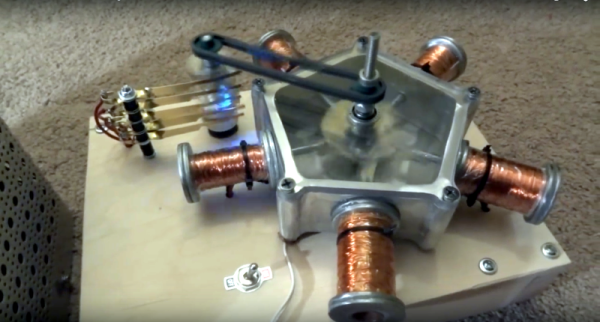When learning about the design of a machine or mechanism, reading and watching videos is certainly effective, but it’s hard to beat hands-on experimentation. In the video after the break, [Brick Technology] uses LEGO to gain some practical insight into the world of piston engine design, from single-cylinder all the way up to radial twelve-cylinder engines.
Using pneumatic cylinders from the LEGO Technic series, [Brick Technology] starts by getting the basics working with a single-cylinder design. Besides the fact that there are no fuel-air explosions involved, these pistons are also double-acting thanks to a valve mechanism that switches the pressurized side of the piston as it reaches the end of its stroke. After a couple of experiments, he settles on using a bank of six two liter soda bottles as a source of pressurized air.
 He also increased the performance of the LEGO cylinders by drilling out the ports and adding silicon oil for lubrication. In the initial prototypes, the cylinders also acted as connecting rods, tilting back and forth as the crankshaft rotates. After some testing, he discovered he could increase efficiency by constraining the cylinder with a slider mechanism and adding a separate connecting rod.
He also increased the performance of the LEGO cylinders by drilling out the ports and adding silicon oil for lubrication. In the initial prototypes, the cylinders also acted as connecting rods, tilting back and forth as the crankshaft rotates. After some testing, he discovered he could increase efficiency by constraining the cylinder with a slider mechanism and adding a separate connecting rod.
With the basics done, [Brick Technology] could start experimenting with engine arrangements and geometry. Inline two, three, and four cylinders and V2, V6, V8, and even R12 were all on the menu. He could also change crankshaft geometry to trade torque for RPM and vice versa, and build a starter motor, and torque generator.
Just like [Brick Technology]’s LEGO electronic drums and vortex machine, this video gives us a itch that can only be scratched by a few hundred LEGO pieces. For rapid prototyping of course.






















